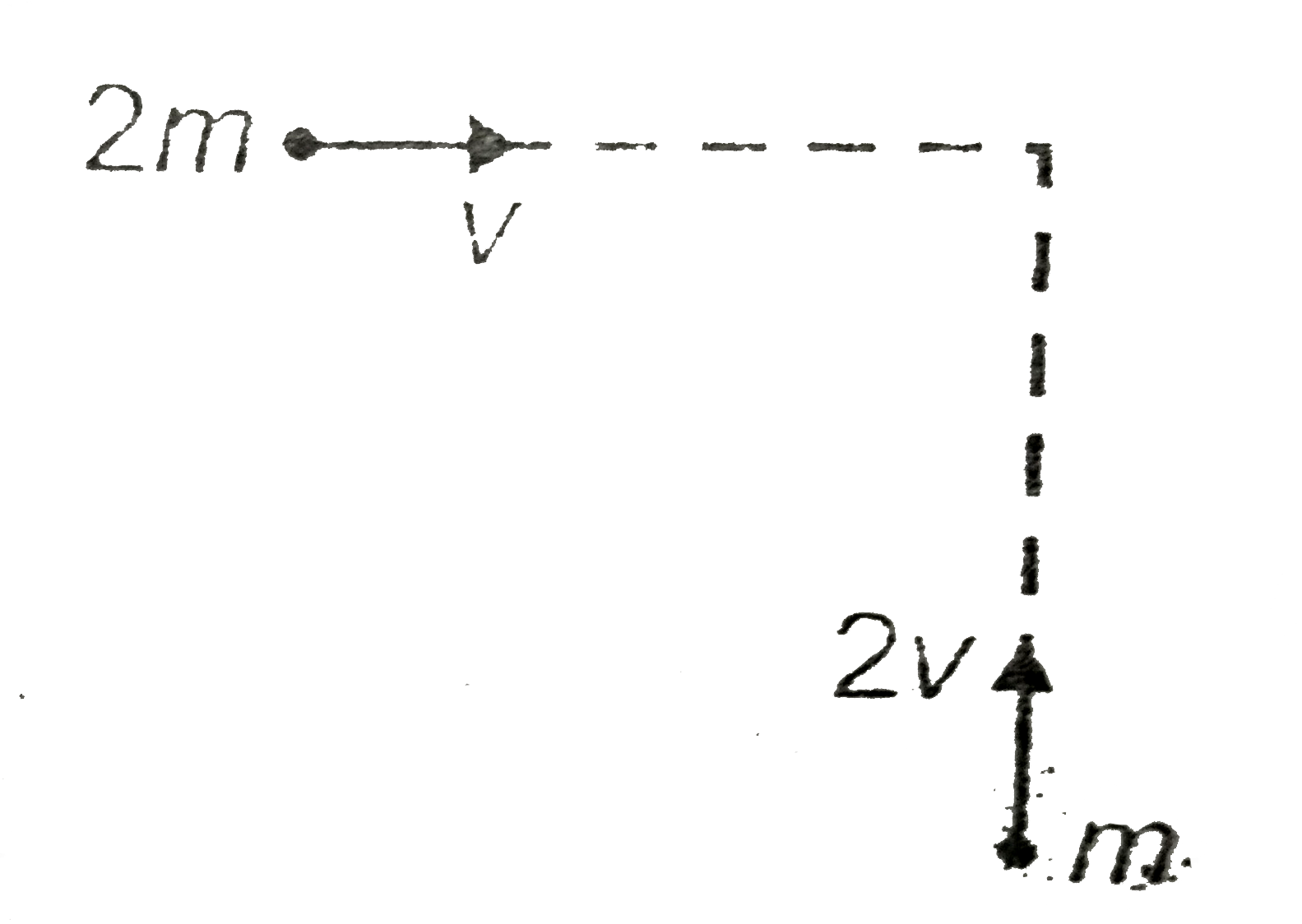Two particles of mass mA and mB and their velocities are VA and VB respectively collides. After collision they interchanges their velocities, then ratio of mAmB is
vAvB
vBvA
vA+vBvB−vA
1
The correct Answer is:D
To solve the problem of two particles colliding and exchanging their velocities, we can follow these steps:
1. Define the Variables:
- Let the mass of particle A be mA and its initial velocity be VA.
- Let the mass of particle B be mB and its initial velocity be VB.
2. Write the Initial Momentum:
- The total initial momentum Pi before the collision is given by:
Pi=mAVA+mBVB
3. Write the Final Momentum:
- After the collision, the particles exchange their velocities. Thus, the final momentum Pf after the collision is:
Pf=mAVB+mBVA
4. Apply Conservation of Momentum:
- According to the law of conservation of momentum, the total initial momentum is equal to the total final momentum:
Pi=Pf
- Therefore, we can write:
mAVA+mBVB=mAVB+mBVA
5. Rearrange the Equation:
- Rearranging the equation gives:
mAVA−mAVB=mBVA−mBVB
- This can be rewritten as:
mA(VA−VB)=mB(VA−VB)
6. Factor Out Common Terms:
- If VA≠VB, we can divide both sides by (VA−VB):
mA=mB
7. Find the Ratio of Masses:
- Thus, the ratio of the masses mAmB is:
mAmB=1
Conclusion:
The ratio of the masses mAmB is 1.
---
- Let the mass of particle A be mA and its initial velocity be VA.
- Let the mass of particle B be mB and its initial velocity be VB.
- The total initial momentum Pi before the collision is given by:
Pi=mAVA+mBVB
- After the collision, the particles exchange their velocities. Thus, the final momentum Pf after the collision is:
Pf=mAVB+mBVA
- According to the law of conservation of momentum, the total initial momentum is equal to the total final momentum:
Pi=Pf
- Therefore, we can write:
mAVA+mBVB=mAVB+mBVA
- Rearranging the equation gives:
mAVA−mAVB=mBVA−mBVB
- This can be rewritten as:
mA(VA−VB)=mB(VA−VB)
- If VA≠VB, we can divide both sides by (VA−VB):
mA=mB
- Thus, the ratio of the masses mAmB is:
mAmB=1
The ratio of the masses mAmB is 1.
Topper's Solved these Questions
- CENTRE OF MASSBOOK - DC PANDEY ENGLISHCHAPTER - CENTRE OF MASSEXERCISE - Taking it together
73 Videos
- CENTRE OF MASSBOOK - DC PANDEY ENGLISHCHAPTER - CENTRE OF MASSEXERCISE - Assertion and reason
21 Videos
- CENTRE OF MASSBOOK - DC PANDEY ENGLISHCHAPTER - CENTRE OF MASSEXERCISE - Medical entrances gallery
27 Videos
- CALORIMETRY AND HEAT TRANSFERBOOK - DC PANDEY ENGLISHCHAPTER - CALORIMETRY AND HEAT TRANSFEREXERCISE - Medical entrance s gallery
38 Videos
- CENTRE OF MASS, IMPULSE AND MOMENTUMBOOK - DC PANDEY ENGLISHCHAPTER - CENTRE OF MASS, IMPULSE AND MOMENTUMEXERCISE - Comprehension type questions
15 Videos
Similar Questions
Two particle of masses m and 2m are coliding elastically as given in figure. If V1 and V2 speed of particle just after collision then
_2019_CBT5_E01_051_Q01.png)
View SolutionTwo particles of masses m1 and m2 in projectile motion have velocities →v1 and →v2 , respectively , at time t=0. They collide at time t0. Their velocities become →v'1 and →v'2 at time 2t0 while still moving in air. The value of ∣∣∣(m1→v'1+m2→v'2)−(m1→v1+m2→v2)∣∣∣
View SolutionTwo balls A and B of masses m and 2 m are in motion with velocities 2v and v, respectively. Compare: Their inertia.
View SolutionTwo balls A and B of masses m and 2 m are in motion with velocities 2v and v, respectively. Compare: Their momentum.
View SolutionTwo balls A and B of masses m and 2 m are in motion with velocities 2v and v, respectively. Compare: The force needed to stop them in the same
View SolutionTwo particles of equal mass m are moving with velocities vˆi and v(ˆi+ˆj2) respectively. If the particles collide completely inelastically, then the energy lost in the process is
View SolutionTwo masses mA and mB moving with velocities vA and vB in opposite direction collide elastically after that the masses mA and mB move with velocity vB and vA respectively. The ratio (mA/mB) is
View SolutionTwo particles of mass 2m and m moving with speed v and 2v respectively pependicular to each other collides perfectly inelastically, then

Speed of the particles after collision
View SolutionTwo masses, m1 and m2 , are moving with velocities v1 and v2. Find their total kinetic energy in the reference frame of centre of mass.
View SolutionTwo particles of masses m1,m2 move with initial velocities u1 and u2. On collision, one of the particles get excited to higher level, after absording enegry. If final velocities of particles be v1 and v2 then we must have
View Solution
